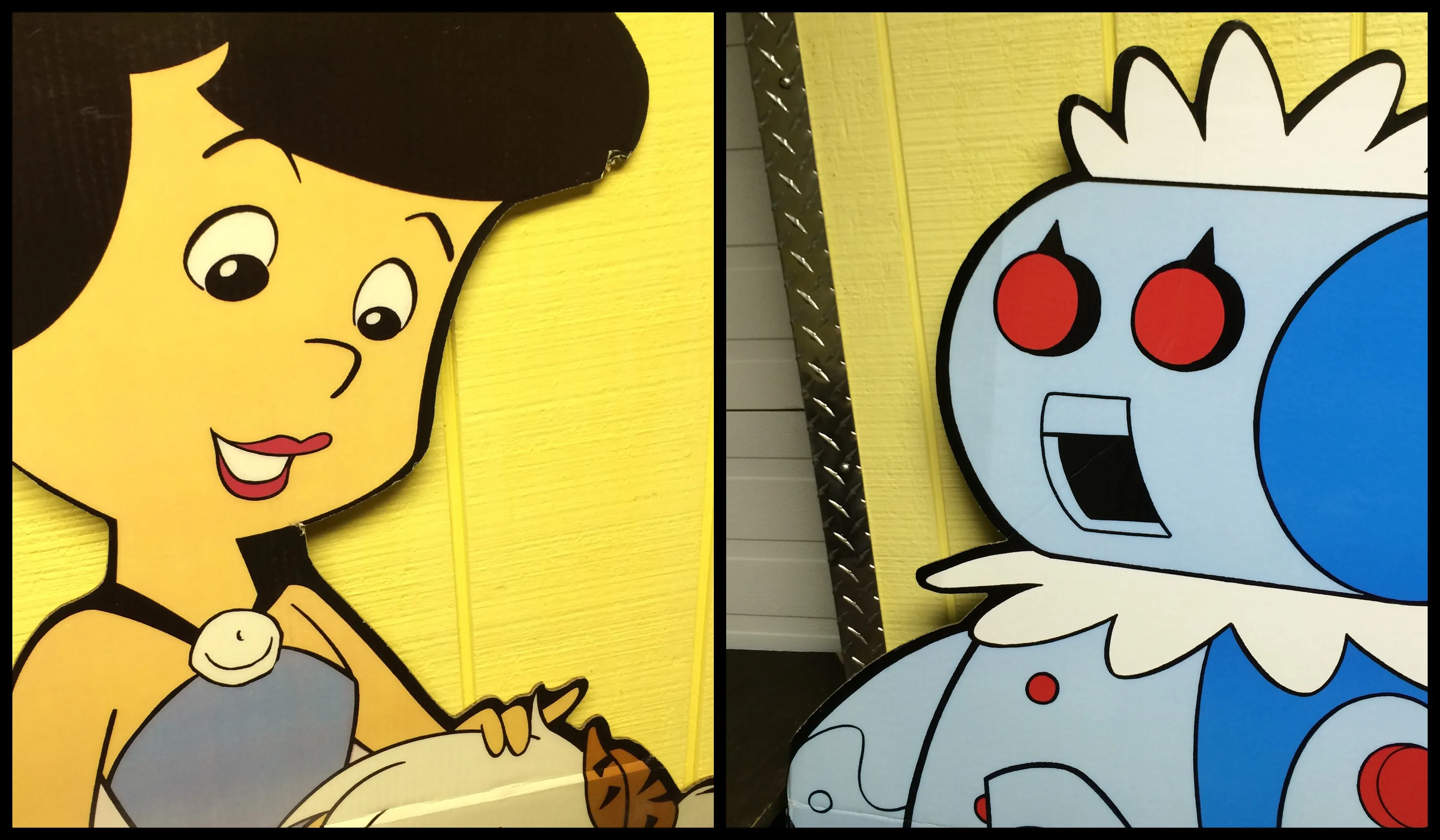Dip|Tychs Storytelling and Altered Contexts Through Juxtaposition
Future Shock

This diptych pairs Betty Rubble from The Flintstones with Rosie the Robot from The Jetsons, both cropped from their original animated contexts. Betty’s downward gaze and tender expression, removed from its source, becomes ambiguous—open to misreading by viewers unfamiliar with the original scene. Rosie’s shocked expression serves as the reaction: a stand-in for future audiences retrospectively judging imagery from our present.
The work examines how cropping functions as editorial power—what’s removed shapes what remains. The title references Alvin Toffler’s concept of accelerating cultural change, suggesting that every generation reinterprets the innocence of the previous one through new moral frameworks.
Essay written: November 2025